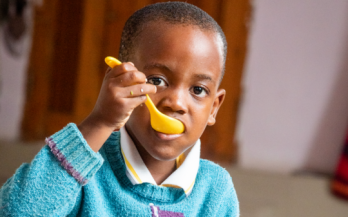Around 130’000 school children in Tanzania are benefiting from eating fortified nutrient-dense meals through an initiative led by the Global Alliance of Improved Nutrition (GAIN) to help address the prevalence of chronic malnutrition in the countryWith a population of 64 million, Tanzania suffers from high rates of micronutrient deficiencies with one-third of children deficient in iron and vitamin A. Lack in such micronutrients for teenagers and young adults could impair their growth, learning capacity and development, and put them at risk of non-communicable diseases with consequential impact in later life.
Vending food products in flexible quantities (i.e., loose, as opposed to in packages) is commonly used worldwide in both traditional and formal retail outlets. While it has other advantages (e.g., reducing packaging materials), the main advantages from the affordability perspective are the ability to buy very small amounts (at lower cost) and to not have to pay the costs of packaging.
The Global Alliance for Improved Nutrition (GAIN) has appointed Ann Tutwiler as Board Chair to succeed Felia Salim, who is completes her tenure in May. Ms Tutwiler will take up the position on 1st June.
Feed The Future's EatSafe: Evidence and Action Towards Safe, Nutritious Food is a USAID-funded programme aiming to enable lasting improvements in the safety of nutritious foods in traditional markets by focusing on behaviour change.
Sadia Kaenzig, Head of Communications and Caroline DeWaal, Deputy Director at EatSafe speak about the importance and impact of food safety.
GAIN announce that the Global Diet Quality Project (GDQP) has been honored with the prestigious Best International Research Award 2023 by the UK's Market Research Society.
As thousands congregate in Iowa for the 2023 Borlaug Dialogue to search for ways to end global hunger and celebrate this year’s World Food Prize Laureate, his words ring truer than ever.
Companies entering the lower-income consumer market often adapt existing products to meet lower-income consumers’ needs—in particular, redesigning the product to improve affordability. One way to do this is to simply replace more expensive ingredients with cheaper alternatives, or omit certain ingredients altogether.










